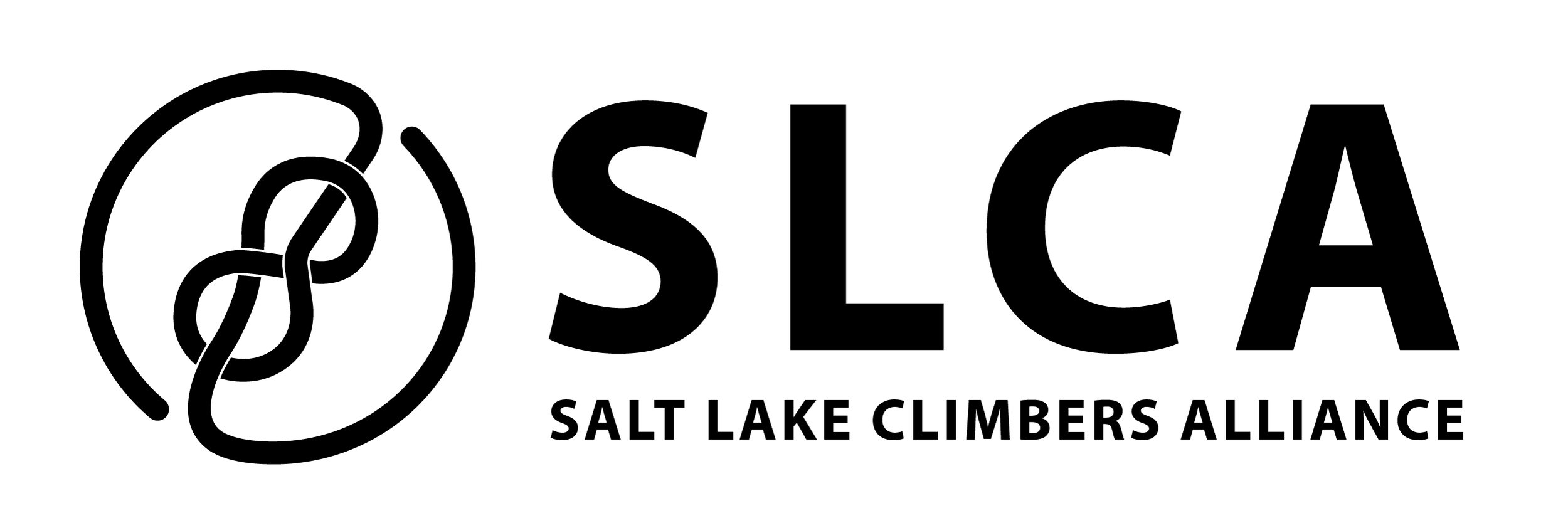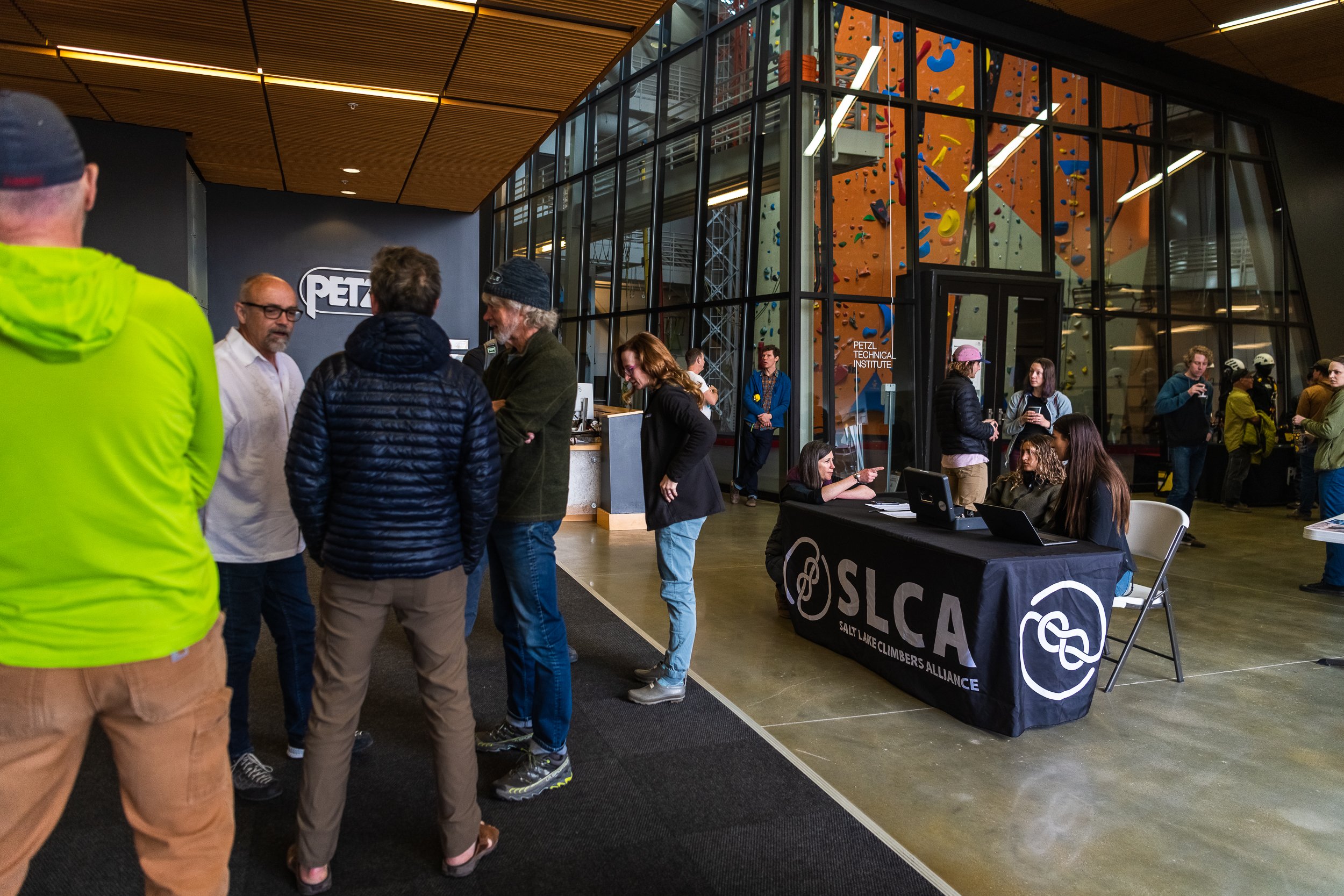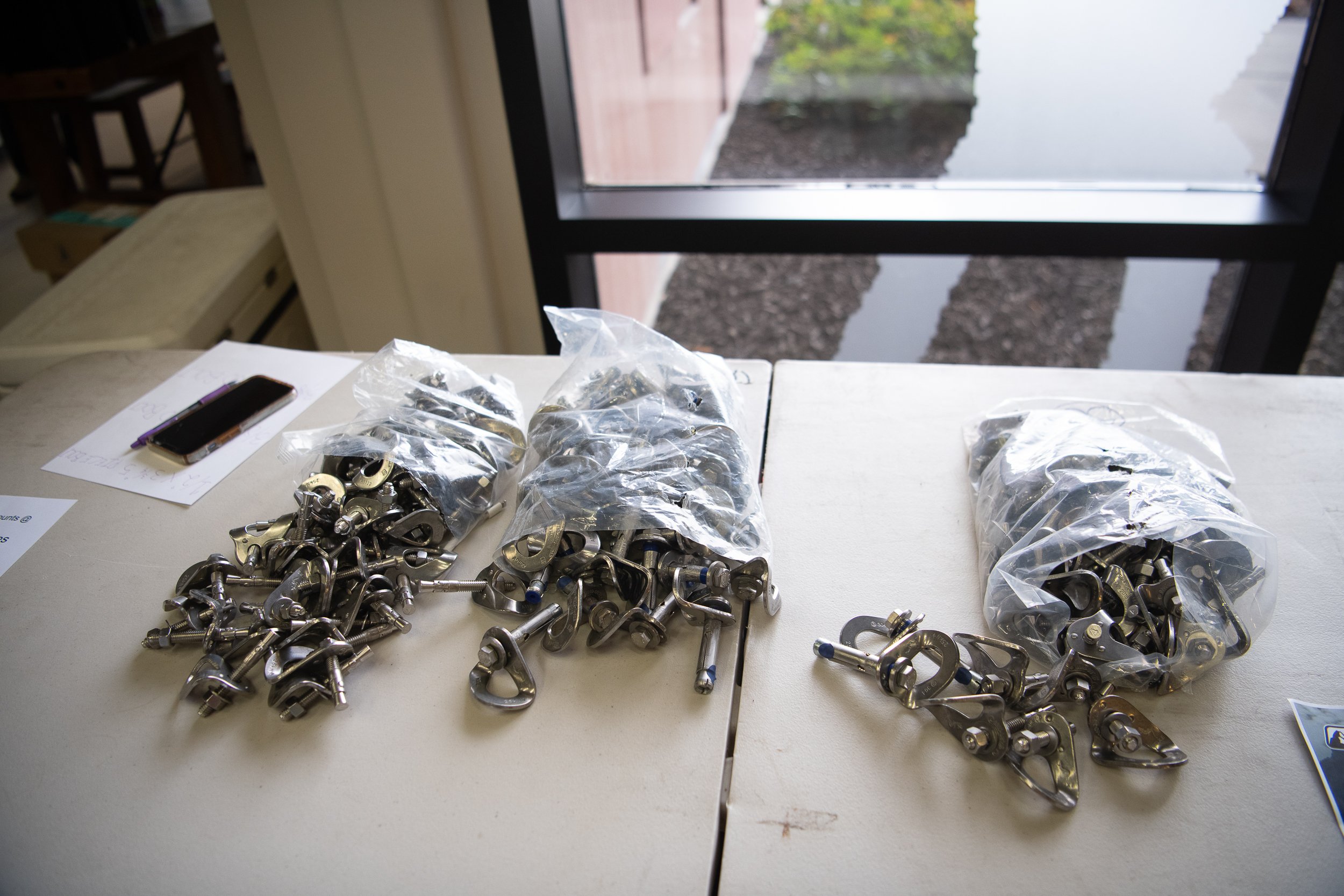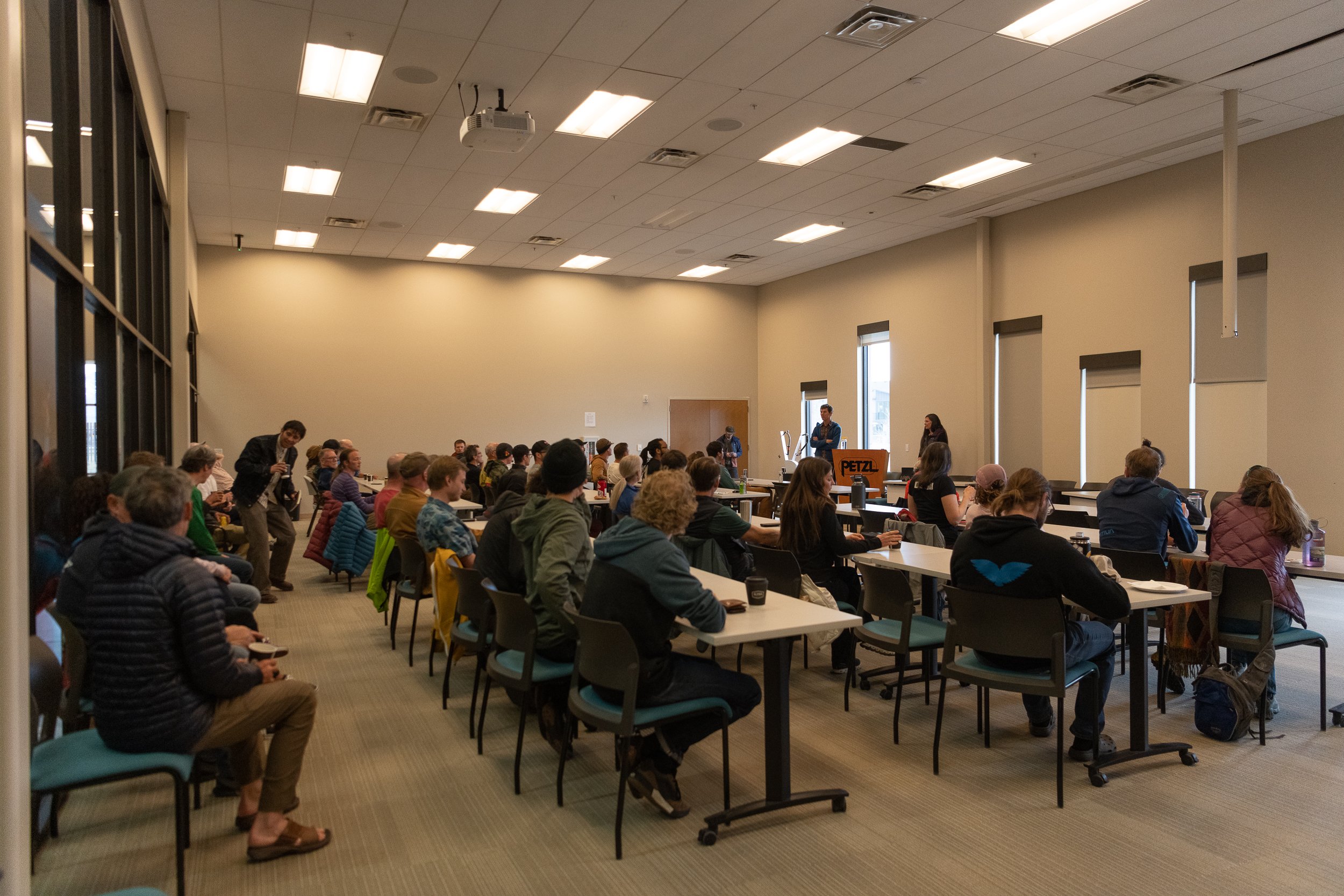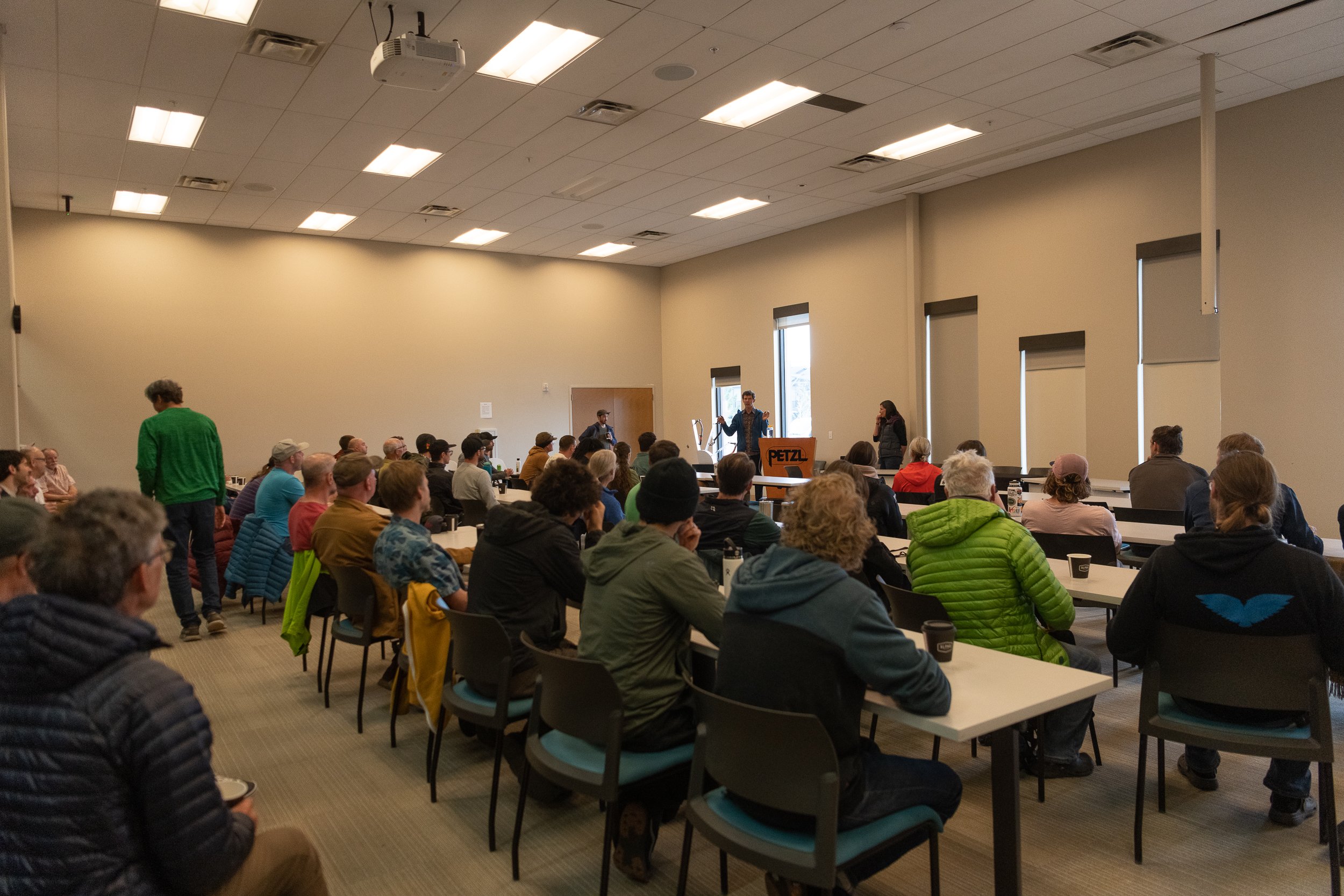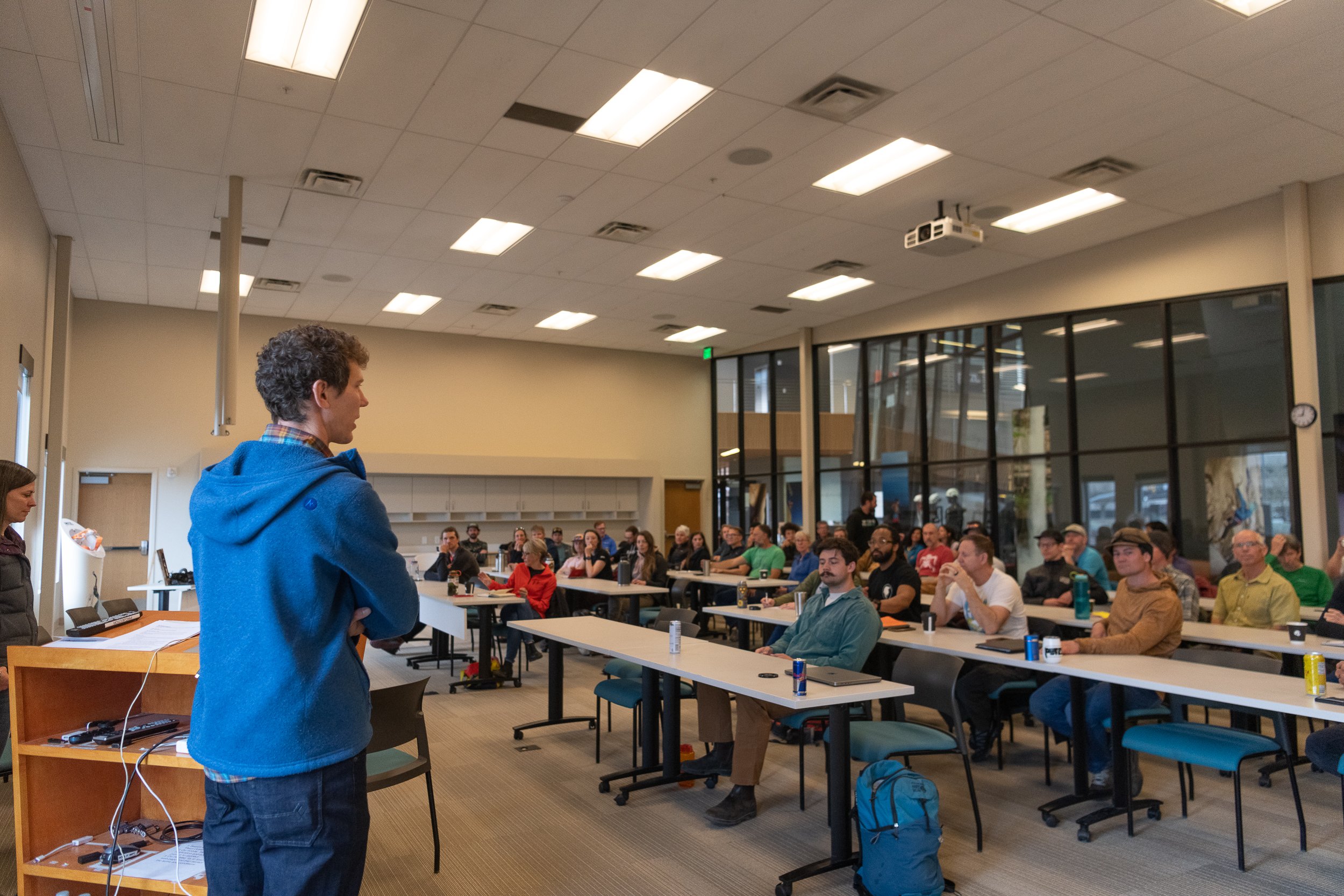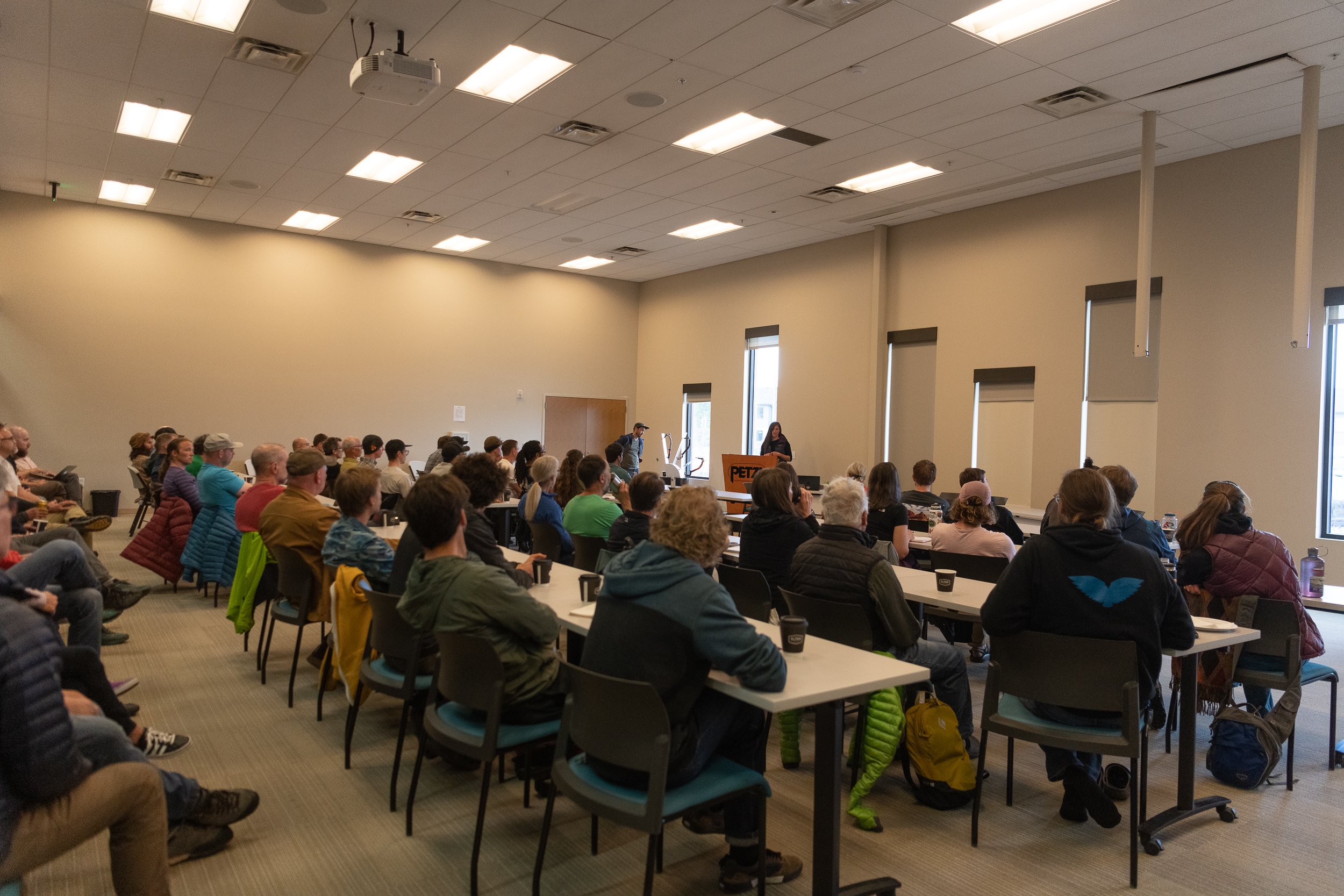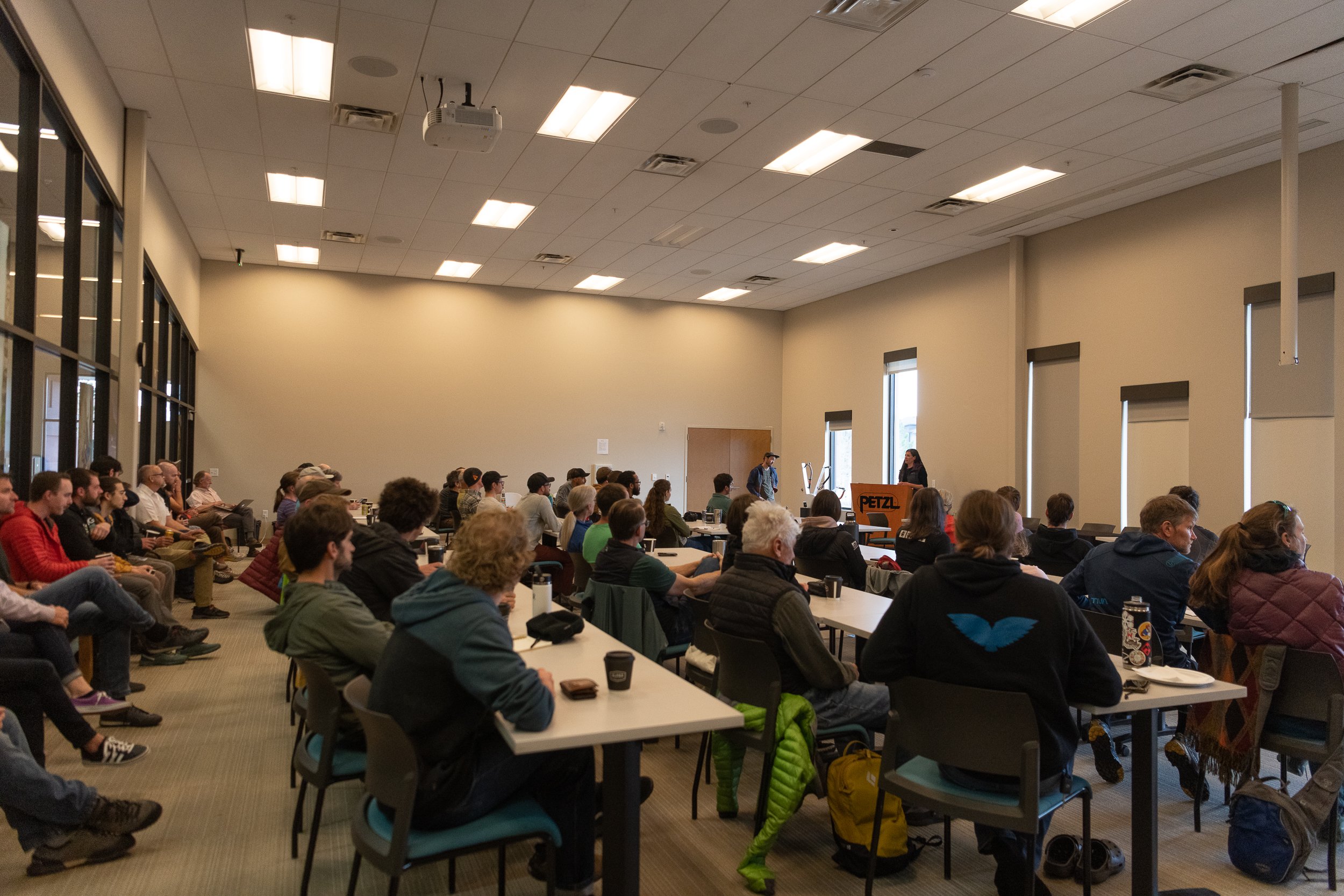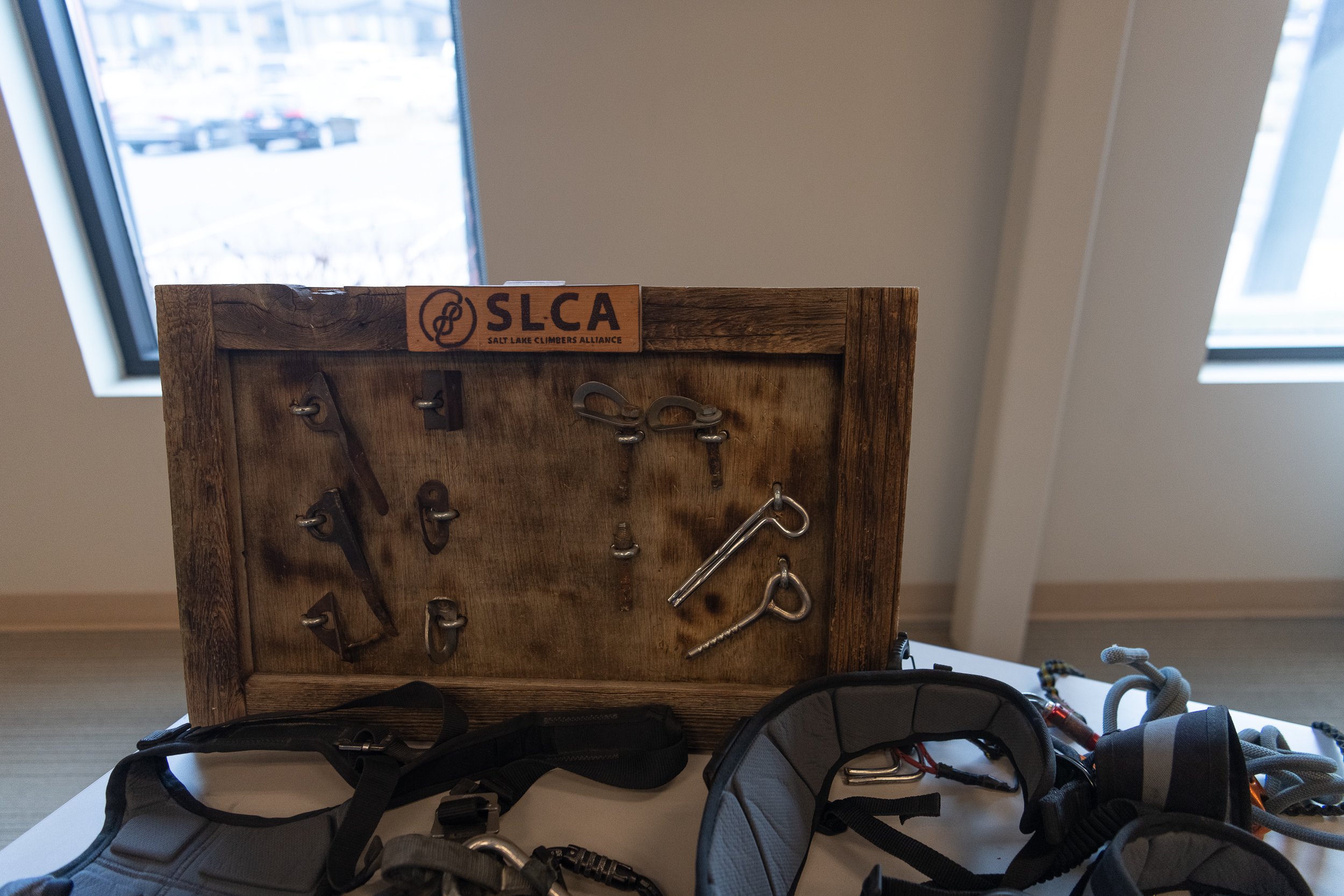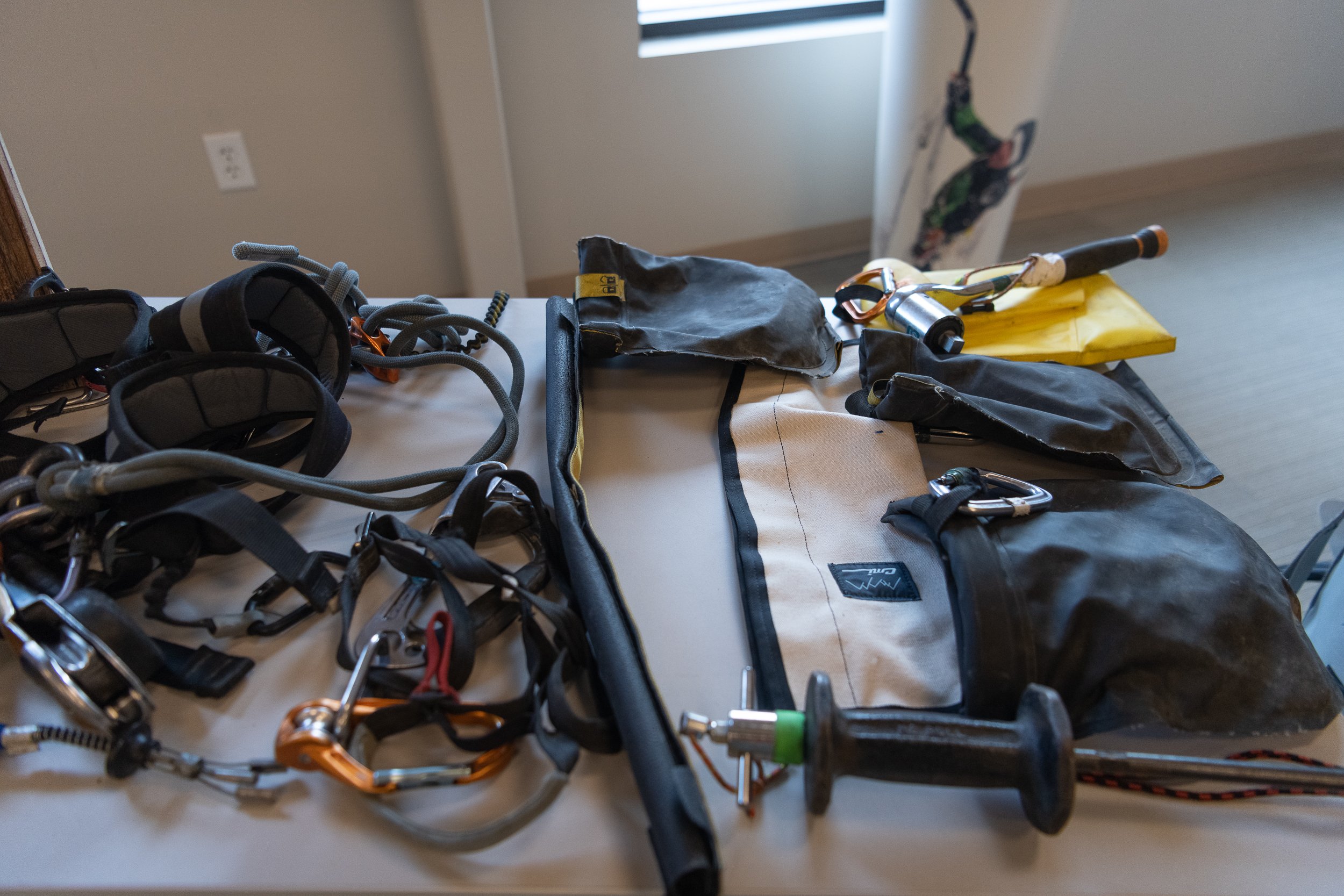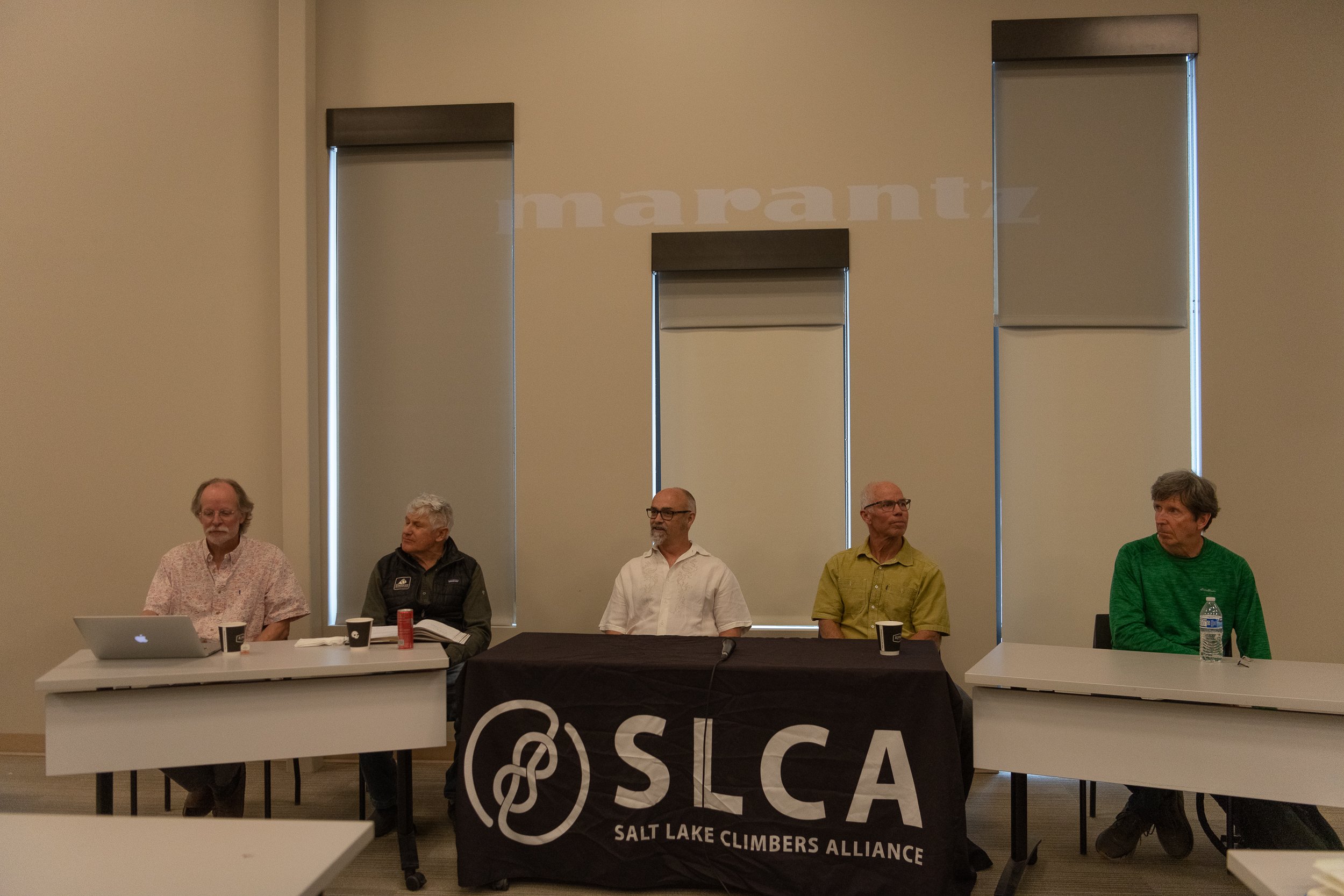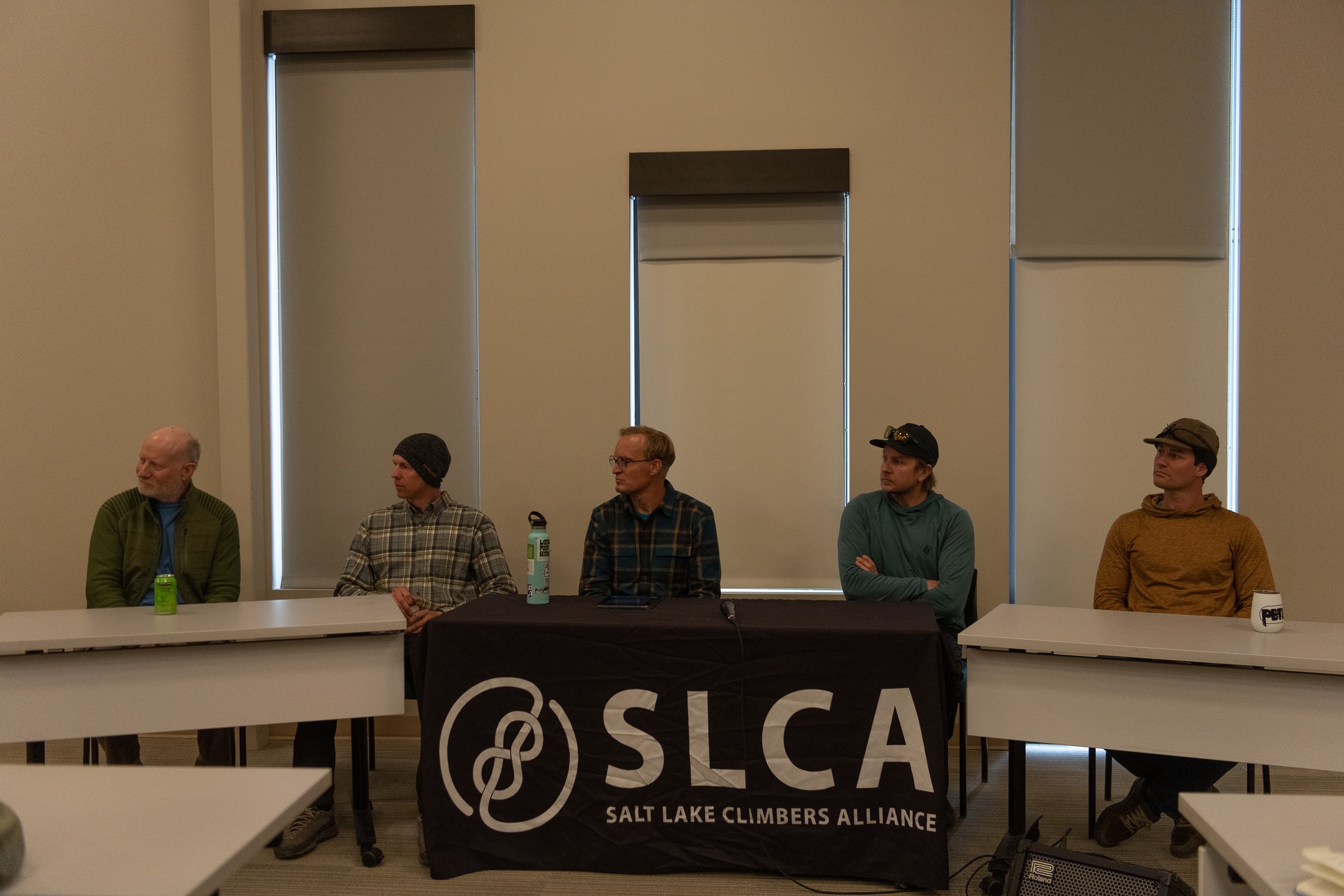Recap: 2024 New Routers Symposium
The Salt Lake Climbers Alliance gathered our community together on March 23, 2024 for a Utah New Routers Symposium. This event was sold out at ninety people and was hosted at Petzl. The youngest to attend was 15 and the oldest was… older.
This symposium was an opportunity for our community to come together for dialogue surrounding ethics and best practices for route development and maintenance in the Wasatch. This was a full day event with panel discussions on topics including: Best Practices, Then & Now, Re-bolting & Re-engineering, and Route Development in 2024.
Overall, the feedback from attendees of the symposium was positive, with many expressing appreciation for the opportunity to discuss best practices and engage in dialogue with the climbing community. There is enthusiasm for future events and a desire to see continued dialogue and action on topics such as route development ethics and more skills based education for those looking to put up routes. They emphasized the importance of involving younger participants and addressing topics that are relevant to them such as developing bouldering areas.
The panels were fueled by a range of local route developers, stewards, members of our anchor maintenance crew, and moderated by the SLCA staff and board of directors. The insight and perspectives shared during the symposium will help inform our decision making when we are out maintaining fixed anchors in the Wasatch with your donations.
Takeaways from the Symposium
We heard a diversity of perspectives from our panelists and attendees. We attempt to capture some takeaways we heard on some tricky topics below.
Best Practices - Panel Discussion Takeaways
We have an affinity for pitons.
As climbing routes age, so does the fixed hardware. From button heads, to star drives, rusted chains, to pitons… all are becoming antiquated and are now in need of maintenance. Pitons are known to fall out due to the freeze thaw nature of the rock. Considerations like ease of terrain, gear placements surrounding the pin, wayfinding, and distance to the next piece of protection all weigh into the need for pitons when establishing a route. A piton may have been used because the developer ran out of battery power for their drill.
The community concedes to replacement of most old hardware, however there is still a population of climbers who want to keep pitons out on the rock. There is a historic-like experience when one encounters a piton on a route that the community agrees needs to be preserved. The University of Utah and the Utah Museum have made a huge effort to collect historical climbing artifacts like pitons. Professional gear manufactures shared that pitons are not designed to be used for anyone but the first ascensionist because they do not have the mechanical expansion function of a bolt needed to protect loads from repeated falls.
Then & Now - Panel Discussion Takeaways
It’s been the wild west for new route development, but that might be changing as land agencies debate climbing management policies.
On one hand, there is not a climbing management plan in most of the Wasatch and putting up new climbing routes is currently unrestricted. The exception right now is in Logan Canyon. This is a sticky subject because creating trails to get to the crag is illegal on Forest Service property. By and large, climbing route developers are mindful of approach trails and do their best to establish an approach trail and some do some basic infrastructure at the belay sites to reduce erosion, but this is for the most part, not top of mind when developing routes. Some have seen this become the detriment to natural landscapes as crags have become popular. It is yet to be seen how the land agencies will manage our user group and new routing in particular. National policy and legislation are being debated right now that will trickle down to local climbing management plans. Panelists explored considerations they make when developing climbing routes such as land ownership, available parking, a sustainable approach trail, nesting of raptors and bats, and limiting the removal of vegetation on route.
Re-bolting & Re-engineering - Panel Discussion Takeaways
Who “owns'' a route once established? The developer, community, land manager, or no one?
The topic of re-bolting and re-engineering routes had a range of perspectives. Some developers felt that moving bolts and re-engineering routes to make them better is acceptable while others felt a route should never be altered. Some felt that if alteration deems necessary, reach out to the original route developer and ask permission. Sometimes the developer is no longer alive. Re-engineering climbing routes to meet the demands of climbers today may become more of a focus in symposiums of the future. The SLCA aims to maintain a shared public resource for the greater climbing public. Involving the developer in the decision of the maintenance of their route is important, but only feasible to a certain point for resource allocation.
New Route Development in 2024 - Panel Discussion Takeaways
Climbing maintains a certain inherent risk, however the spectrum of risk is relative to the individual.
There are many philosophies when it comes to new route development ranging from: to be bold, a route should be run out to challenge mental fortitude, to the philosophy that a route can be bold and be developed to protect the climber from ground fall and serious injury. Climbing is unique because individuals can seek out a desired experience and perception of risk varies amongst the individual. When one establishes a climbing route, it becomes part of a shared public resource when on public land and there are considerations some developers make to this extent. There was a common theme regarding grades and skill differing from indoor to outdoor climbing and a need for more education about this topic to the climbing public. There was a desire for more discussion on route development ethics, including the proliferation of fixed gear and the impact on climbing areas. Attendees suggested exploring questions around the necessity of fixed gear and the importance of preserving outdoor climbing areas in their natural state. There were concerns that outdoor climbing areas are starting to resemble indoor gyms with stashed gear and fixed draws at the detriment to the natural landscape.
We could never capture all that was shared at this symposium, so we hope to see you at the next gathering. We have heard from route developers, and now input from the climbing public is needed. Stay tuned for ways to engage and participate in shaping the future of climbing in the Wasatch. Thank you to the volunteers and SLCA staff for hosting a successful and meaningful community event.
Thanks also to the panelists and moderators including:
Keith Luscinski
Glen Ritter
Karl Guthrie
Alex Lemieux
Julia Geisler
Dave Bingham
James Garrett
Darrenn Knezek
Allen Sanderson
Brian Smoot
Pitt Grewe
Steve Bartlett
Brad Heller
Jimmy Keithley
Nate Liles
Eric Salmi
Drew Brodhead
Stefani Day
Diago Peggs
Tyler Phillips
Mario R. Stanley
Blair Rice
